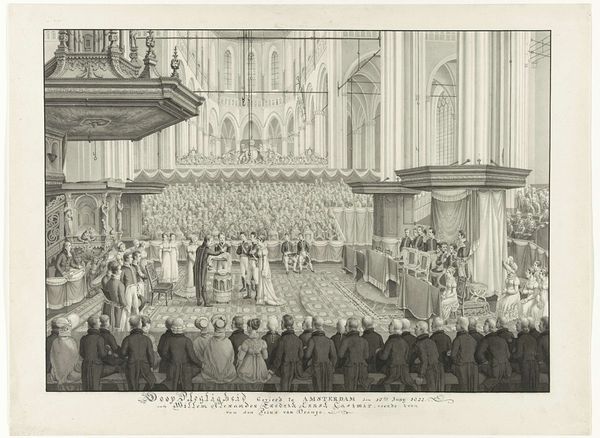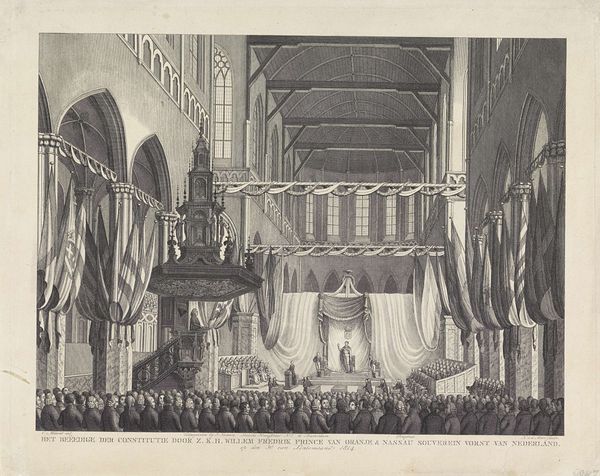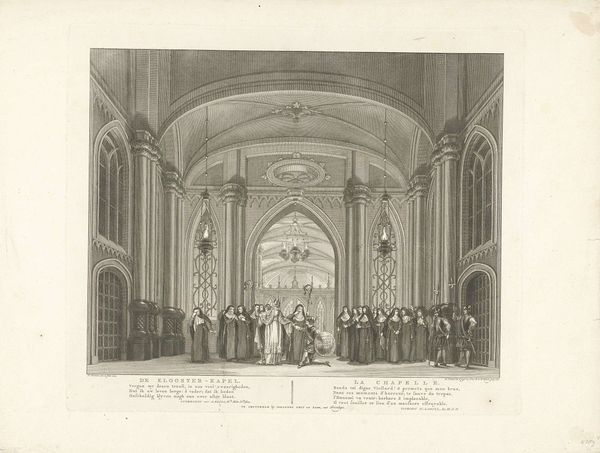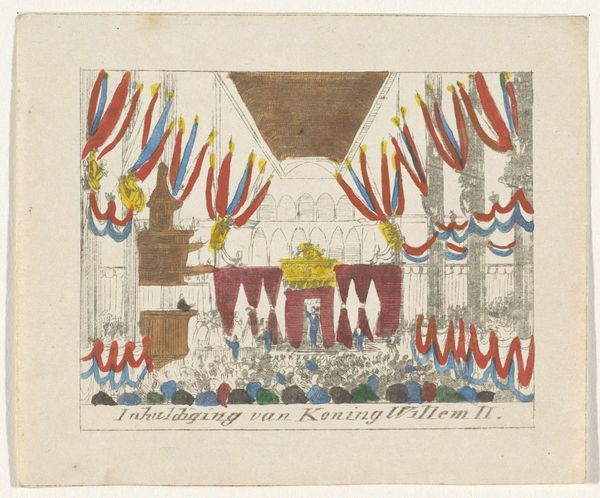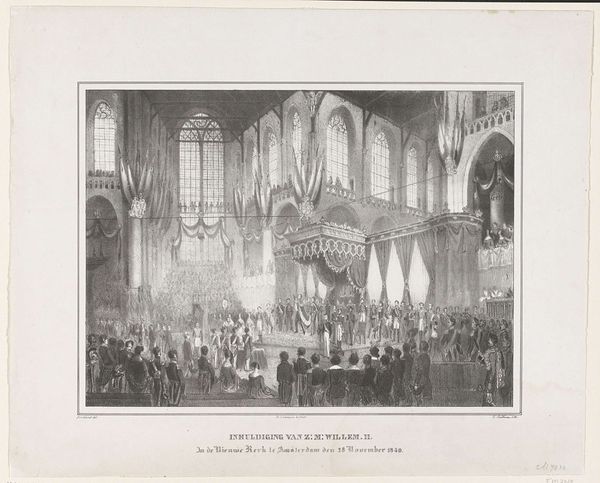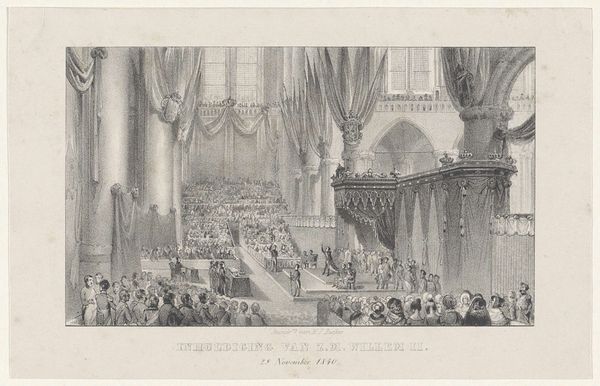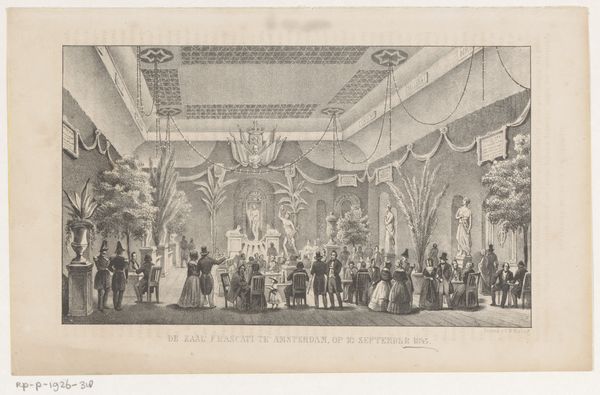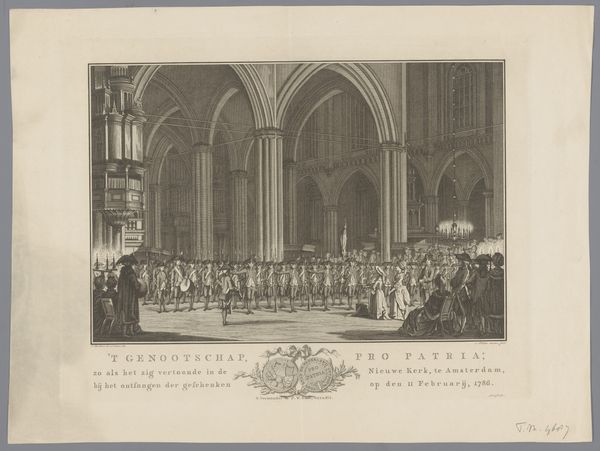
print, engraving
#
neoclacissism
# print
#
romanticism
#
genre-painting
#
history-painting
#
engraving
Dimensions: height 230 mm, width 300 mm
Copyright: Rijks Museum: Open Domain
Editor: This engraving by Jacob Plügger, dating from 1822, captures the baptism of Ernst Casimir van Oranje-Nassau. The scene within the church feels so grand, almost staged. What strikes you when you look at it? Curator: I'm immediately drawn to the theatricality of the event and how that’s reflected in the print. Consider how meticulously the setting is rendered: the architecture of the Nieuwe Kerk dominates. It isn’t just a backdrop, it's an active participant, underscoring the power and legitimacy of the monarchy. Notice the masses of faces looking on, representing the public endorsement and visibility that monarchy requires. How do you think an event like this functions politically? Editor: I guess it's like a piece of propaganda almost? A carefully constructed image of royal continuity. It reminds me of a staged photo-op today, but I’m struck by how visible this was to a broad audience. Was that the intention, making sure everyone could participate visually? Curator: Precisely! Engravings like this were relatively accessible. Disseminating the image helped to construct a shared national narrative, embedding the new royal family within the consciousness of the Dutch public. Do you see any visual elements that enhance the grandeur of this construction? Editor: Well, everyone is looking toward the event at the center. It must have taken the engraver a long time to render so many people. That feels significant and maybe it mirrors something from neoclassicism since everyone has similar garments. Curator: Exactly, the sheer density of figures creates a sense of overwhelming support and shared identity, while the nod to neoclassicism positions the new royal house within a history of European power. Jacob Plügger presents much more than the act of baptizing an heir to the throne. Editor: I hadn't thought about the print being a tool for nation-building. I see the piece in a new light, understanding its role in shaping public opinion around the monarchy. Thank you. Curator: And I've appreciated thinking about the image as part of ongoing visual politics.
Comments
No comments
Be the first to comment and join the conversation on the ultimate creative platform.
